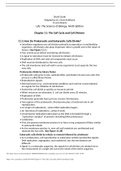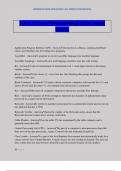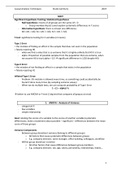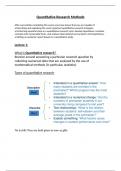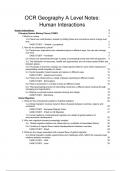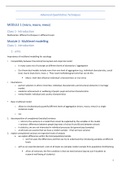Study Guide
Adapted by Dr. Drew Kohlhorst
to accompany
Life: The Science of Biology, Ninth Edition
Chapter 11: The Cell Cycle and Cell Division
11.1 How Do Prokaryotic and Eukaryotic Cells Divide?
• Unicellular organisms use cell division primarily to reproduce; in multicellular
organisms, cell division also plays important roles in growth and in the repair of
tissues. (See Figure 11.1.)
• Four events occur before and during cell division:
• A signal to reproduce must be received to initiate cell division.
• Replication of DNA and vital cell components must occur.
• DNA must be distributed to the new cells.
• The cell membrane (and cell wall in some organisms) must separate the two
new cells.
Prokaryotes divide by binary fission
• Prokaryotic cells grow in size, replicate DNA, and divide into two new cells; this
process is called binary fission.
• Reproductive signals:
• External factors (e.g., environmental conditions and nutrient concentrations)
are signals for the initiation of cell division.
• Escherichia coli divide as quickly as resources permit.
• When resources are abundant, E. coli can divide every 20 minutes.
• Replication of DNA:
• Prokaryotes generally have just one circular chromosome.
• Two regions of the prokaryotic chromosome play a functional role in cell
reproduction:
• ori (origin of replication)—where DNA replication begins.
• ter (terminus of replication)—where it ends.
• Chromosome replication takes place as the DNA is threaded through a
“replication complex” of proteins (including DNA polymerase).
• Cytokinesis:
• First, the plasma membrane pinches in to form a ring composed of fibers similar
to eukaryotic tubulin.
• As the membrane pinches in, new cell wall materials are synthesized and
separate the two cells. (See Figure 11.2B)
Eukaryotic cells divide by mitosis or meiosis followed by cytokinesis
• As in prokaryotes, cell reproduction in eukaryotes entails reproductive signals,
DNA replication, segregation, and cytokinesis, but the mechanisms are
different:
• Signal. In a eukaryotic organism, the signals for cell division are related not to
the environment of a single cell, but to the needs of the entire organism.
This study source was downloaded by 100000830300868 from CourseHero.com on 10-27-2021 06:09:27 GMT -05:00
https://www.coursehero.com/file/8051958/Chapter-11-The-Cell-Cycle-and-Cell-Division-Study-Guide/
, • Replication. Eukaryotes usually have many chromosomes (humans have 46)
making the processes of replication and segregation more intricate.
• Segregation. Newly replicated chromosomes (sister chromatids) segregate into
two nuclei through mitosis.
• Cytokinesis. Cytokinesis proceeds differently in plant cells (which have a cell
wall) than in animal cells (which do not).
11.2 How Is Eukaryotic Cell Division Controlled?
• Different types of cells vary greatly in how often they divide.
• The events that occur to produce two eukaryotic cells from one are called the
cell cycle.
• Between divisions, the eukaryotic cell is in interphase.
• Most cells have two major phases: mitosis and interphase.
• Cells are in interphase most of the time.
• Only a small percentage are in mitosis at any given moment.
• Interphase consists of three subphases. (See Figure 11.3.)
• G1: Gap 1, the period just after mitosis and before the beginning of DNA
synthesis.
• S phase (synthesis): the time when the cell’s DNA is replicated.
• G2: the time after S and prior to mitosis.
• Mitosis and cytokinesis are referred to as the M phase.
• G1 phase:
• Each chromosome is a single, unreplicated structure.
• Phase length is variable in different cell types.
• In the case of cells that dispense with it entirely (e.g., embryonic cells), cells
may enter a resting phase called G0.
• G1-to-S transition:
• The commitment to cell division is made during this transition.
• S phase:
• The process of DNA replication is completed.
• Two sister chromatids are joined together and await segregation into two new
cells.
• G2 phase:
• The cell makes preparations for mitosis, such as making new microtubules that
will move the chromosomes to opposite ends of the cell. Specific signals trigger
events in the cell cycle
• A cell in S phase produces a substance that activates DNA replication. (See
Figure 11.4.)
• Transitions from G1 to S and G2 to M depend on activation of a protein called
cyclin-dependent kinase, or Cdk.
• A kinase is an enzyme that transfers a phosphate from ATP to different
protein(s), a process called phosphorylation. Phosphorylation changes the
protein’s three-dimensional structure, thereby altering its function (in many
cases activating or deactivating the protein).
• Cdk plays an important role in initiating the steps of the cell cycle.
• Cdk is activated by binding to a second type of protein called a cyclin, which
alters its shape and exposes the active site. (See Figure 11.5.)
• The cyclin–Cdk complex acts as a protein kinase that triggers transition from G1
to S. The cyclin then breaks down, and the Cdk becomes inactive.
This study source was downloaded by 100000830300868 from CourseHero.com on 10-27-2021 06:09:27 GMT -05:00
https://www.coursehero.com/file/8051958/Chapter-11-The-Cell-Cycle-and-Cell-Division-Study-Guide/
Adapted by Dr. Drew Kohlhorst
to accompany
Life: The Science of Biology, Ninth Edition
Chapter 11: The Cell Cycle and Cell Division
11.1 How Do Prokaryotic and Eukaryotic Cells Divide?
• Unicellular organisms use cell division primarily to reproduce; in multicellular
organisms, cell division also plays important roles in growth and in the repair of
tissues. (See Figure 11.1.)
• Four events occur before and during cell division:
• A signal to reproduce must be received to initiate cell division.
• Replication of DNA and vital cell components must occur.
• DNA must be distributed to the new cells.
• The cell membrane (and cell wall in some organisms) must separate the two
new cells.
Prokaryotes divide by binary fission
• Prokaryotic cells grow in size, replicate DNA, and divide into two new cells; this
process is called binary fission.
• Reproductive signals:
• External factors (e.g., environmental conditions and nutrient concentrations)
are signals for the initiation of cell division.
• Escherichia coli divide as quickly as resources permit.
• When resources are abundant, E. coli can divide every 20 minutes.
• Replication of DNA:
• Prokaryotes generally have just one circular chromosome.
• Two regions of the prokaryotic chromosome play a functional role in cell
reproduction:
• ori (origin of replication)—where DNA replication begins.
• ter (terminus of replication)—where it ends.
• Chromosome replication takes place as the DNA is threaded through a
“replication complex” of proteins (including DNA polymerase).
• Cytokinesis:
• First, the plasma membrane pinches in to form a ring composed of fibers similar
to eukaryotic tubulin.
• As the membrane pinches in, new cell wall materials are synthesized and
separate the two cells. (See Figure 11.2B)
Eukaryotic cells divide by mitosis or meiosis followed by cytokinesis
• As in prokaryotes, cell reproduction in eukaryotes entails reproductive signals,
DNA replication, segregation, and cytokinesis, but the mechanisms are
different:
• Signal. In a eukaryotic organism, the signals for cell division are related not to
the environment of a single cell, but to the needs of the entire organism.
This study source was downloaded by 100000830300868 from CourseHero.com on 10-27-2021 06:09:27 GMT -05:00
https://www.coursehero.com/file/8051958/Chapter-11-The-Cell-Cycle-and-Cell-Division-Study-Guide/
, • Replication. Eukaryotes usually have many chromosomes (humans have 46)
making the processes of replication and segregation more intricate.
• Segregation. Newly replicated chromosomes (sister chromatids) segregate into
two nuclei through mitosis.
• Cytokinesis. Cytokinesis proceeds differently in plant cells (which have a cell
wall) than in animal cells (which do not).
11.2 How Is Eukaryotic Cell Division Controlled?
• Different types of cells vary greatly in how often they divide.
• The events that occur to produce two eukaryotic cells from one are called the
cell cycle.
• Between divisions, the eukaryotic cell is in interphase.
• Most cells have two major phases: mitosis and interphase.
• Cells are in interphase most of the time.
• Only a small percentage are in mitosis at any given moment.
• Interphase consists of three subphases. (See Figure 11.3.)
• G1: Gap 1, the period just after mitosis and before the beginning of DNA
synthesis.
• S phase (synthesis): the time when the cell’s DNA is replicated.
• G2: the time after S and prior to mitosis.
• Mitosis and cytokinesis are referred to as the M phase.
• G1 phase:
• Each chromosome is a single, unreplicated structure.
• Phase length is variable in different cell types.
• In the case of cells that dispense with it entirely (e.g., embryonic cells), cells
may enter a resting phase called G0.
• G1-to-S transition:
• The commitment to cell division is made during this transition.
• S phase:
• The process of DNA replication is completed.
• Two sister chromatids are joined together and await segregation into two new
cells.
• G2 phase:
• The cell makes preparations for mitosis, such as making new microtubules that
will move the chromosomes to opposite ends of the cell. Specific signals trigger
events in the cell cycle
• A cell in S phase produces a substance that activates DNA replication. (See
Figure 11.4.)
• Transitions from G1 to S and G2 to M depend on activation of a protein called
cyclin-dependent kinase, or Cdk.
• A kinase is an enzyme that transfers a phosphate from ATP to different
protein(s), a process called phosphorylation. Phosphorylation changes the
protein’s three-dimensional structure, thereby altering its function (in many
cases activating or deactivating the protein).
• Cdk plays an important role in initiating the steps of the cell cycle.
• Cdk is activated by binding to a second type of protein called a cyclin, which
alters its shape and exposes the active site. (See Figure 11.5.)
• The cyclin–Cdk complex acts as a protein kinase that triggers transition from G1
to S. The cyclin then breaks down, and the Cdk becomes inactive.
This study source was downloaded by 100000830300868 from CourseHero.com on 10-27-2021 06:09:27 GMT -05:00
https://www.coursehero.com/file/8051958/Chapter-11-The-Cell-Cycle-and-Cell-Division-Study-Guide/

